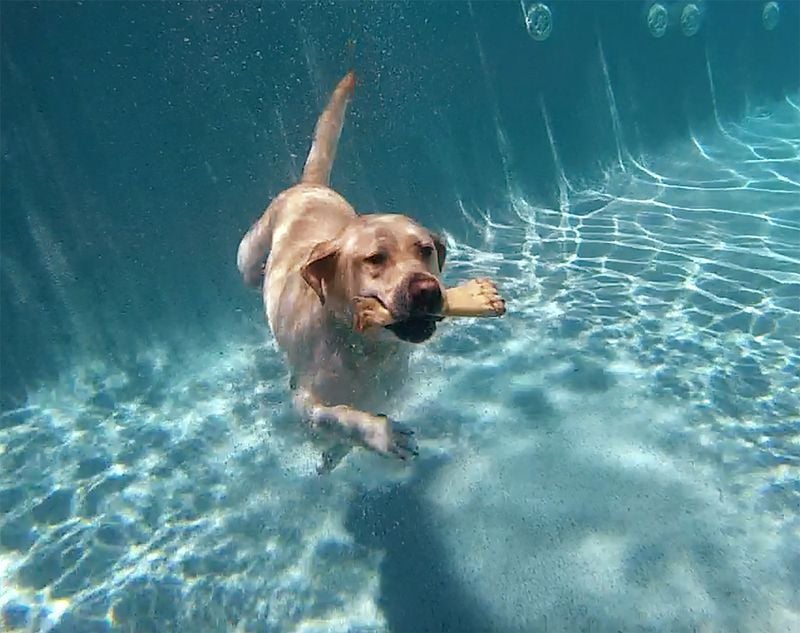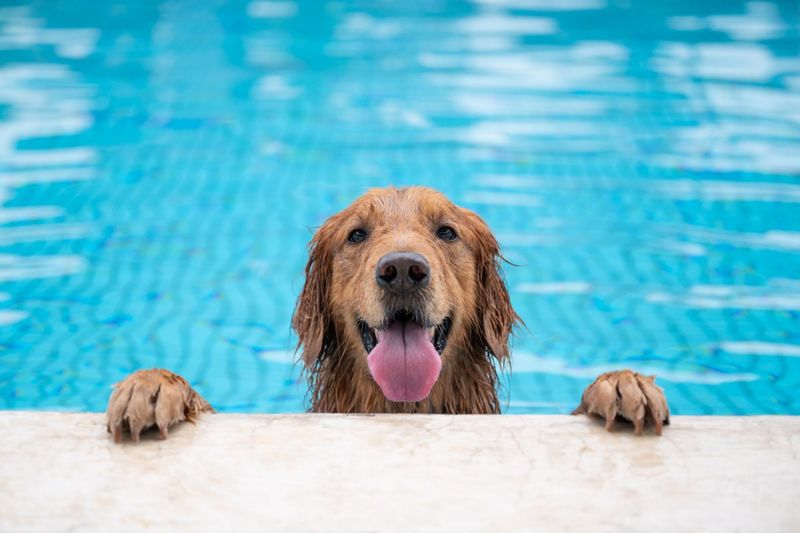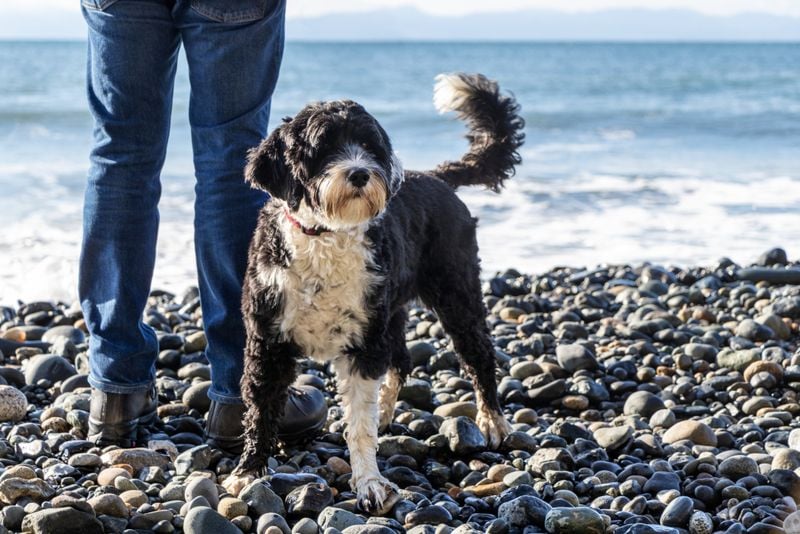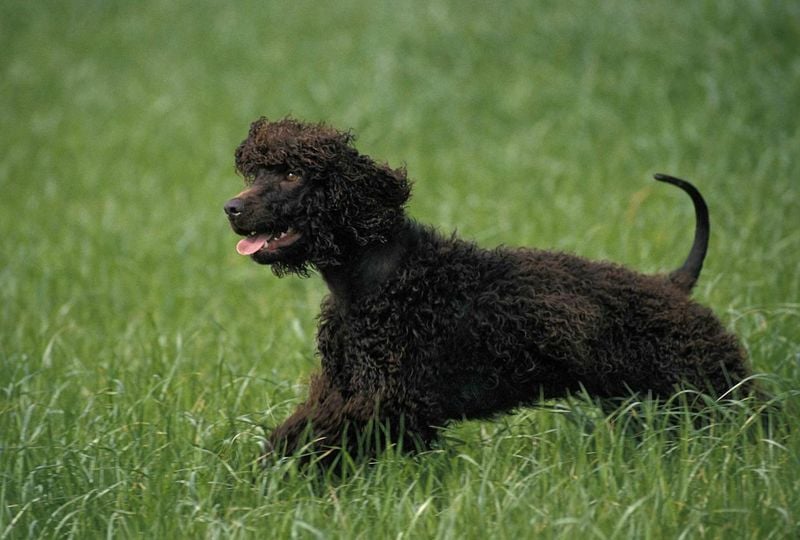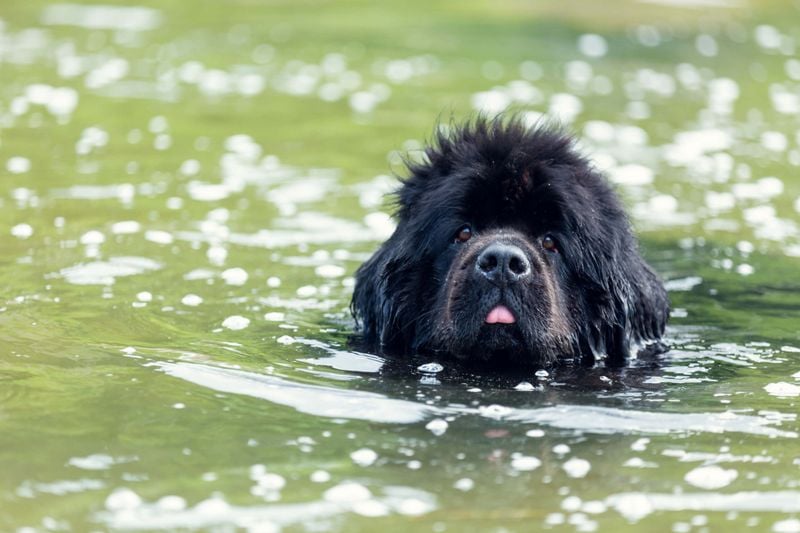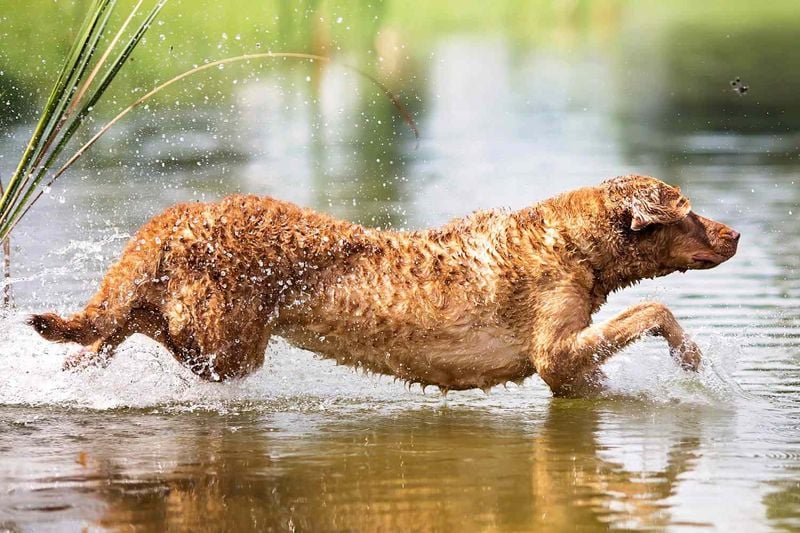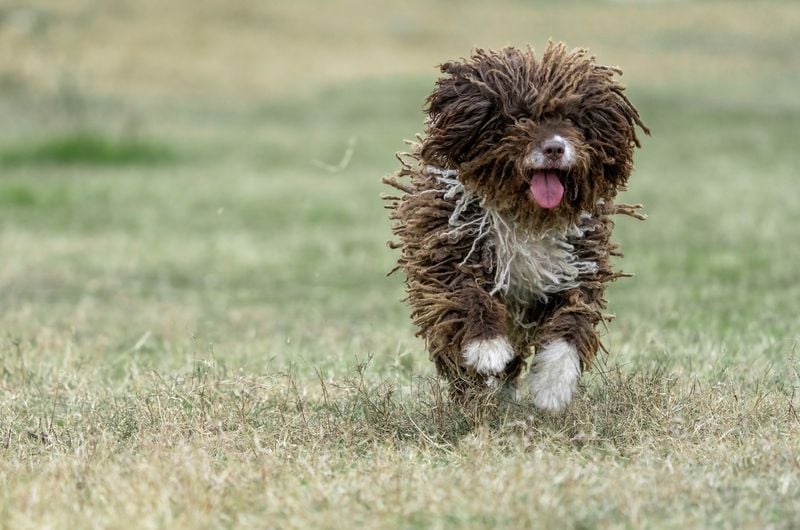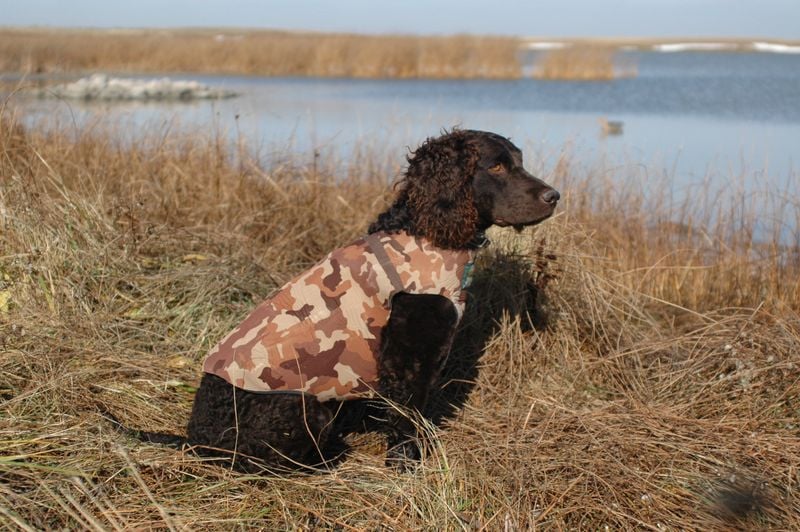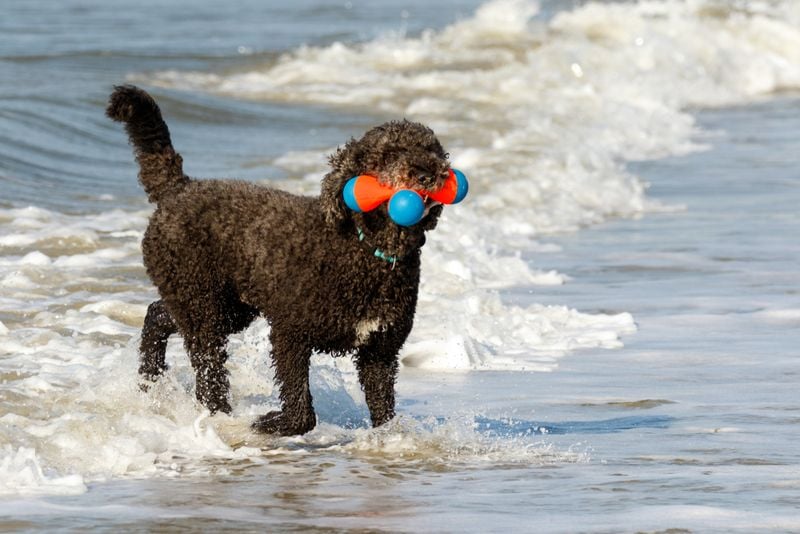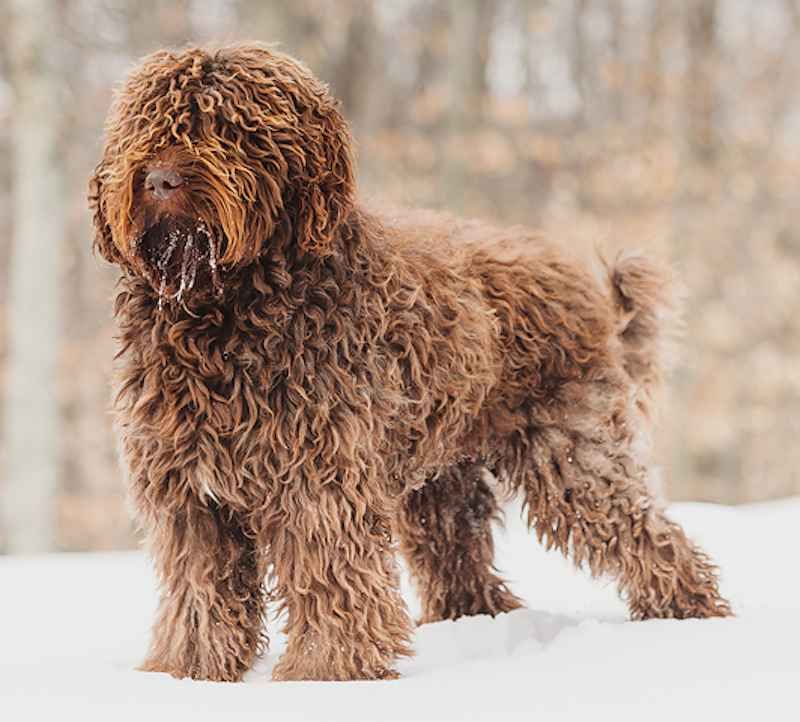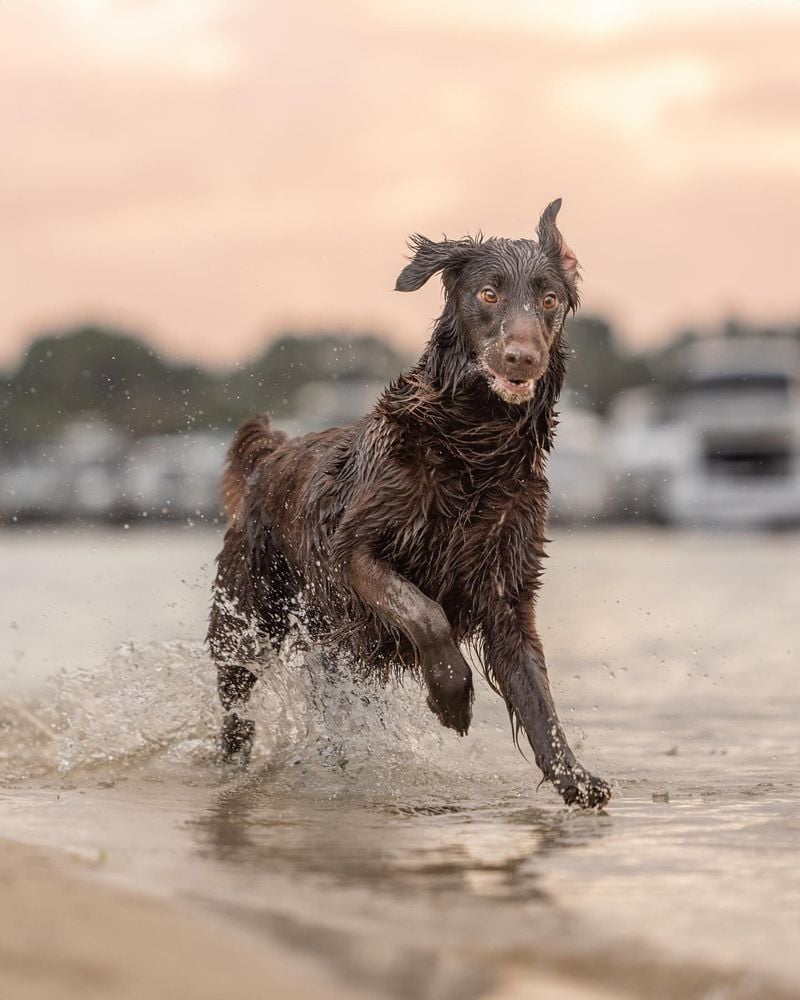12 Dogs That Will Jump in Before You Even Dip a Toe
Ever tried to enjoy a peaceful swim only to have your furry friend splash in before you? Some dog breeds are natural water babies, born with an instinct to dive into any puddle, pool, or pond they spot.
These water-loving pups don’t just tolerate swimming—they live for it! Whether you’re looking for a swimming buddy or trying to avoid one, here’s a rundown of canine companions who simply can’t resist making waves.
1. Labrador Retriever: The Original Water Champion
Labs were born for water work, with webbed paws that act like natural flippers and a water-resistant double coat that keeps them comfortable even in chilly lakes. Originally bred in Newfoundland (not Labrador!) to help fishermen haul nets and retrieve fish, these enthusiastic swimmers have never lost their ancestral love for splashing around.
Their otter-like tail serves as a powerful rudder, helping them navigate through currents with impressive precision. You’ll rarely see a Lab hesitate at water’s edge—they typically charge in with unbridled joy, often before their humans have even decided if swimming is on the agenda.
2. Golden Retriever: The Enthusiastic Aquatic Explorer
With a gleam in their eye and a wagging tail, Golden Retrievers approach water with the same enthusiasm they bring to everything in life. Their water-repellent outer coat and thick undercoat keep them comfortable whether they’re paddling in summer lakes or braving chillier waters.
Scottish gamekeepers developed these dogs to retrieve waterfowl, explaining their natural swimming ability. What makes Goldens unique isn’t just their skill but their joyful approach—they swim with their signature smile, seemingly delighted by every splash and ripple.
Many Golden owners report their dogs inventing games that involve water, from repeatedly retrieving toys to simply swimming playful circles around their humans.
3. Portuguese Water Dog: The Presidential Paddler
Famous as the Obama family’s choice of pet, Portuguese Water Dogs have centuries of maritime history behind them. Sailors along Portugal’s coast relied on these robust swimmers to carry messages between ships, retrieve lost tackle, and even herd fish into nets!
Their distinctive curly, waterproof coat barely slows down in water. Unlike some breeds that paddle with just their front legs, these aquatic athletes use all four limbs with remarkable coordination, making them incredibly efficient swimmers.
A Portuguese Water Dog doesn’t just enjoy swimming—they consider it their birthright. Many owners find themselves planning vacations around water access just to keep their Portuguese Water Dogs happy and fulfilled.
4. Irish Water Spaniel: The Curly-Coated Diver
“Clownish” yet dignified, the Irish Water Spaniel sports a distinctive purple-hued curly coat and rat-like tail that set it apart from other water-loving breeds. As Ireland’s native water retriever, these dogs have a waterproof double coat that protects them during extended swimming sessions in cold Atlantic waters.
Their powerful hindquarters provide exceptional thrust in water, while their webbed feet make them naturally efficient swimmers. Historically used for waterfowl hunting in Ireland’s marshes and lakes, they’ll plunge into water regardless of temperature or conditions.
An Irish Water Spaniel’s approach to swimming isn’t just functional—it’s performed with a characteristic bounce and flair that matches their spirited personality.
5. Newfoundland: The Gentle Aquatic Giant
Despite their massive size—often weighing over 150 pounds—Newfoundlands move through water with surprising grace. Their powerful build, webbed feet, and oily, water-resistant double coat make them natural lifeguards. In fact, they were specifically bred to rescue drowning people in the frigid North Atlantic.
Newfoundlands possess a unique swimming style, using a modified breast stroke rather than the paddle motion most dogs employ. This technique allows them to pull heavy loads through rough water without tiring.
Their natural lifesaving instinct is so strong that untrained Newfoundlands have been known to “rescue” swimmers they believe are in trouble, whether help is needed or not!
6. Chesapeake Bay Retriever: The All-Weather Water Worker
Developed in the harsh conditions of Maryland’s Chesapeake Bay, these retrievers were bred to handle ice-cold water and punishing weather while retrieving dozens of waterfowl daily. Their wavy, oily coat repels water and provides insulation even in near-freezing conditions where other water breeds would struggle.
Known for their amber or yellowish eyes that contrast with their brown coat, “Chessies” have an independent streak compared to other retrievers. Their determination is legendary—these dogs will break ice to retrieve a duck without hesitation.
A Chesapeake’s relationship with water isn’t just about swimming; they seem to have a sixth sense about water conditions, often adjusting their approach based on currents and waves.
7. Spanish Water Dog: The Woolly Water Worker
Sporting a distinctive corded coat that resembles dreadlocks when mature, Spanish Water Dogs have herded livestock and assisted fishermen along Spain’s coasts for centuries. Their woolly coat is actually a practical adaptation—it insulates them in water yet dries quickly once they emerge.
Unlike some water breeds that dive right in, Spanish Water Dogs often approach water with a methodical assessment first. This isn’t hesitation but rather their working dog intelligence analyzing the situation.
Historically used to help herd fish into nets and retrieve equipment for fishermen, they bring problem-solving skills to their swimming. Their powerful back legs give them impressive bursts of speed in water, allowing them to change direction with remarkable agility.
8. American Water Spaniel: The Versatile Midwestern Swimmer
Developed by 19th-century hunters in the Great Lakes region, American Water Spaniels are the smallest of the true water retriever breeds. Don’t let their compact size fool you—these dogs were designed to work from small boats in Wisconsin’s challenging marshlands, retrieving waterfowl through ice and rough water.
Their chocolate-brown curly coat provides excellent insulation, while their muscular build belies their modest size. Wisconsin declared them the state dog in recognition of their unique American heritage.
American Water Spaniels approach swimming with businesslike efficiency rather than flamboyant enthusiasm. They swim with their eyes and ears alert, constantly scanning for potential retrieves—a habit from their hunting heritage that remains even in family pets.
9. Standard Poodle: The Elegant Aquatic Athlete
Beneath the fancy haircuts and show dog reputation lies one of the world’s most capable water retrievers. The name “Poodle” comes from the German “pudel,” meaning “to splash in water”—revealing their true heritage as serious hunting dogs. Their elaborate show clips originally served practical purposes, with pom-poms strategically placed to protect joints while swimming in cold water.
Standard Poodles combine remarkable intelligence with athletic ability. They swim with precision and purpose, using their powerful legs and dense, curly coat to navigate efficiently.
Unlike some water breeds that crash into water with abandon, Poodles often enter with a graceful dive that minimizes splash—a technique that helped them sneak up on waterfowl during their hunting days.
10. Barbet: The Ancient French Water Fowler
Sporting a shaggy beard (the name “Barbet” comes from the French word “barbe” meaning beard), this ancient French breed has been retrieving waterfowl since at least the 16th century. Their dense, curly coat forms natural cords that provide waterproofing and insulation in cold water.
Barbets swim with a methodical determination that reflects their serious working heritage. They maintain a low profile in water, with just their distinctive woolly head visible above the surface—a technique that helped them approach wary waterfowl undetected.
Though relatively rare outside France, these dogs are experiencing renewed interest as people rediscover their exceptional swimming abilities and friendly temperament. A Barbet approaches water not as recreation but as their natural workplace.
11. Flat-Coated Retriever: The Perpetually Playful Swimmer
Often described as “Peter Pan” dogs for their youthful exuberance well into adulthood, Flat-Coated Retrievers approach water with unbridled joy. Their sleek, flat-lying coat appears glossy rather than woolly, yet provides excellent water resistance while reducing drag as they swim.
Originally developed in the Victorian era as gamekeeper’s retrievers, they combine the water skills of retrievers with the sensitivity of setters. Their distinctive broad, flat skull houses an impressive brain that quickly solves water retrieval puzzles.
What distinguishes Flat-Coats from other water dogs is their perpetual enthusiasm—they’ll be just as excited about their thousandth swim as their first. Swimming isn’t just an activity for them; it’s a fundamental expression of their joyful approach to life.
12. Boykin Spaniel: The Swamp-Savvy Southern Swimmer
South Carolina’s state dog earned its place in southern culture through remarkable adaptability to the region’s swamps and waterways. Developed to hunt wild turkeys and waterfowl from small boats called “bateaux,” these medium-sized retrievers had to be substantial enough for water work yet compact enough not to rock the boat.
Their rich liver-brown coat repels the tannic water of southern swamps while providing camouflage among cypress knees and water plants. Boykins navigate through lily pads and aquatic vegetation with surprising agility.
Less known outside the South, these dogs bring a distinctly regional approach to water work, having evolved specifically for the unique challenges of southern waterways. Their webbed toes spread wide to prevent sinking in soft mud—a practical adaptation for swamp swimming.

